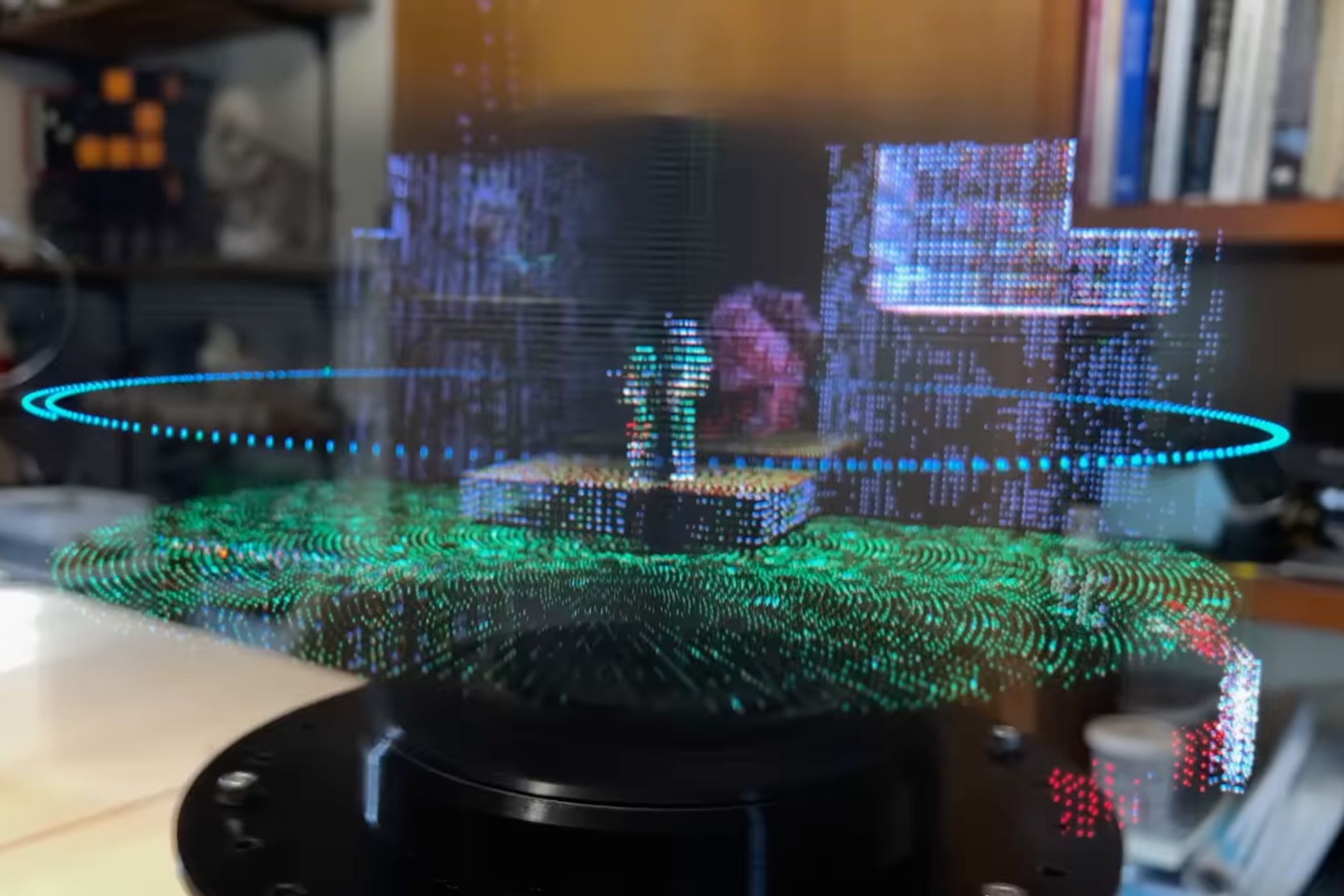Key Takeaways
- Volumetric displays show images with depth using “voxels” instead of pixels, offering a more immersive experience.
- There are three approaches to creating volumetric displays: Swept-Volume, Static Volume, and Projector Arrays.
- While volumetric displays have potential in various fields, they still lack color and resolution compared to current display technologies.
Apart from 3D displays that either do or do not need glasses, and VR headsets, most computer displays offer a picture that’s flat as a pancake. However, there is another approach to displaying images that’s much more substantial. If you really want to feel like the virtual world is in the room with you, then volumetric displays are what you want.
What Is a Volumetric Display?
A volumetric display creates images with apparent volume. In other words, it’s not just a flat image on the surface of a screen. It’s a representation of actual volume. This is why volumetric displays don’t have pixels, instead they have “voxels” or volumetrix pixels. Think of tiny cubes, and the more if them you have, the finer the resolution of things you can represent.
With a volumetric display, a 3D object appears to have size and shape. You can look past it, walk around, it and basically look at it the way you would any real object. There are different ways to create a volumetric display, just as there are different ways to draw a picture on a flat panel. In general, there are three approaches:
- Swept-Volume Displays: If you’ve seen those “holograms” that work by spinning a strip of LEDs really fast, then you already have an idea of how this works. Except, with a volumetric display the spinning element is a panel of LEDs. Thanks to persistence of vision (the fact that we see afterimages and blur with fast moving objects) you can use this method to create an image with volume.
- Static Volume Displays: Here there are no moving parts, but instead there’s a volume of material like a solid glass cube, or cloud of particles. Think lasers shining through the fog from a smoke machine.
- Projector Arrays: Another approach is to use multiple projectors to build an image inside a transparent medium like glass.
Regardless of how you reach the final result, the image data used to feed these displays must have volumetric data too. Which is less common than you might think. Most 3D graphics today are “rasterized” which is the process of computing what a 3D scene would look like mapped to pixels on a flat screen.
Current Example of Volumetric Displays
The image up there is from a viral video of a special version of Doom called Voxel Doom which, as the name suggests, converts classic Doom so that it makes use of voxels instead of flat 2D sprites.
This particular display is a swept-volume design created by James Brown, a Wētā Workshop graphics engineer. As he explains:
This display works by spinning a matrix display rapidly about a vertical axis, lighting up each LED as it passes through part of a 3D image.
Then there’s Looking Glass, who make 3D “holographic” displays, although strictly speaking, these aren’t really holographic. These devices use light field technology, where multiple perspectives are projected from within a box to simulate a 3D object that changes with the viewer’s position.
Then we have VLED technology from Voxon Photonics, which uses light points suspended in 3D space, as this somewhat creepy floating head explains.
I expect we’ll see more and more takes on volumetric displays over the next decade, probably starting with public displays in shopping malls or convention centers. We could still have the giant shark from Back to the Future 2, if a decade or two late.
Why These Displays Could Be Useful
Apart from the obvious commercial uses, there are many reasons to want volumetric displays. There are plenty of uses in fields like science, engineering, and medicine. Of course, you can achieve the same basic result with augmented reality and something like an Apple Vision Pro, but it’s more elegant and far less expensive to have one display everyone can see without needing a $3500 headset for each person or even a few hundred bucks a pop each for a Meta Quest 3.
Apart from visualization for serious purposes, there’s plenty of potential for this as another way to display entertainment content. Video games and a whole new way of making movies are just two possibilities.
There’s a Long Way to Go
While volumetric displays are undeniably cool, they’re also still quite crude and can’t hold a candle to the fidelity of 2D screens or augmented reality or virtual reality display technology. Over time, I expect the color and resolution of volumetric displays to get better, but I don’t expect it to happen tomorrow. Nonetheless, I can’t wait until the first commercial models for regular folks become a reality, or at least until we can see them in public.




